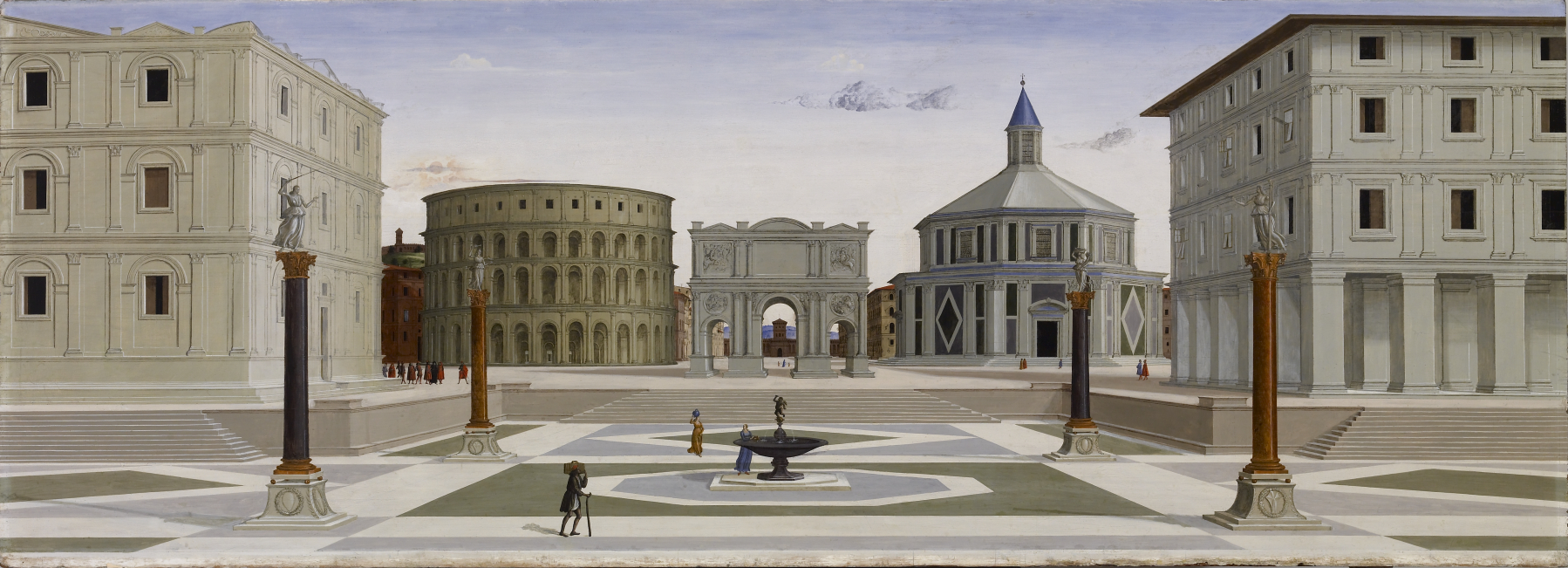It was during a recent visit to the Alte Pinakothek in Munich that I encountered The Annunciation by an artist whose name I did not recognize: Fra Carnevale.
My curiosity was roused and I began to research this little known, reclusive, Renaissance artist.
Between the years 1420 and 1425, records are scarce; a child by the name of Bartolomeo di Giovanni Corradini was born in the city of Urbino. Little is known of his childhood. At the age of sixteen, he entered an apprenticeship under the guidance of a respected artist from Ferrara, Antonio Alberti. With the encouragement and connections of his master, the twenty year old Corradini moved to Florence in 1445 and, for one year, studied under Fillipo Lippi, one of the finest painters of his age.
While Corradini’s apprenticeship in Florence was but one year long, he studied works by Donatello, Brunelleschi and Battista Alberti. It was during the apprenticeship that his fascination with architectural perspective began.
In the latter part of 1448, he left Florence and returned to Urbino.
Here is some important historical background about Carnevale’s home city.
Between the years 1444 and 1482 Urbino was controlled by a powerful condottieri, Federico di Montefeltro. From within the walls of Palazzo Ducale in Urbino, Federico assembled one of the finest libraries in Renaissance Italy. His interest in art and the creation of a center for learning, caused him to issue numerous artistic commissions across Italy.
The Dominican order in Urbino was centered in the Church of Santa Maria della Bella. It was amidst the convolutions of power, politics and religion that Federico first encountered Fra Carenvale, who had taken the Dominican vows in 1449.
One of Carnevlale’s earliest works, part of an altarpiece for a church in Urbino, is Presentation of the Virgin in the Temple (Circa 1467). This particular work clearly demonstrates Carnevale’s fascination with perspective. The powerful arch and background of his work nearly overpower the figures in the foreground. An interesting side-note about the work is that the shape of the altarpiece is recognizable at the top of the painting. The two figures that surmount the arch were originally the edges of the painting’s frame.
One other work stands out among the many created by Carnevale: The Ideal City (ca 1480 – 1485). This was one of several commissions by Duke Federico di Montefeltro of Urbino for his palace.
In a long rectangular frame, the artist has created a sterile, balanced and bleak study of a city. Perspectives are finely focused, the four Cardinal Virtues of Justice, Prudence, Temperance (Restraint) and Courage (Fortitude), top four columns near the center of the work.
Why the artist chose to include only twenty-one figures in the work remains a mystery. There is a sterility to the painting. While the scene is balanced in its geometric form, the work exudes no warmth, no emotion. Were the intent to replicate Carnevale’s interpretation of an ideal world, one based on Roman concepts of balance and form, then the artist has well succeeded. This work does show a clear retreat from the emotion demonstrated in his 1467 work of the Virgin and Temple, possibly in reaction to his ascetic and withdrawing life in the Dominican order.

The Ideal City
Fra Carnevale
ca. 1480-1485
The three panels in Carnevale’s only polyptych (altar piece with three or more panels) have been dispersed across Italy. Visitors can view one panel each in the Pinacoteca di Brera and the Pinactoteca Ambrosiana. The third panel is in the province of Le Marche Italy, in Loreto’s Museum of the Holy House.
This elusive and little understood artist created numerous works that remain enigmatic gifts to the world of Renaissance art. He is much worthy of more study.
—
Following is a partial list of his known works and current collections:
Birth of the Virgin, Metropolitan Museum New York
Annunciation, National Gallery, Washington, DC
Presentation of the Virgin in the Temple, Boston, Museum of Fine Arts


